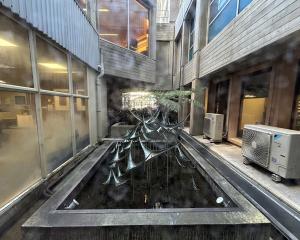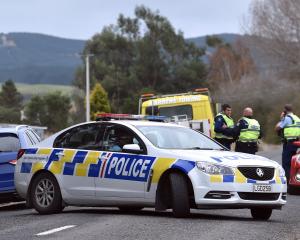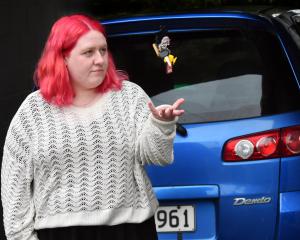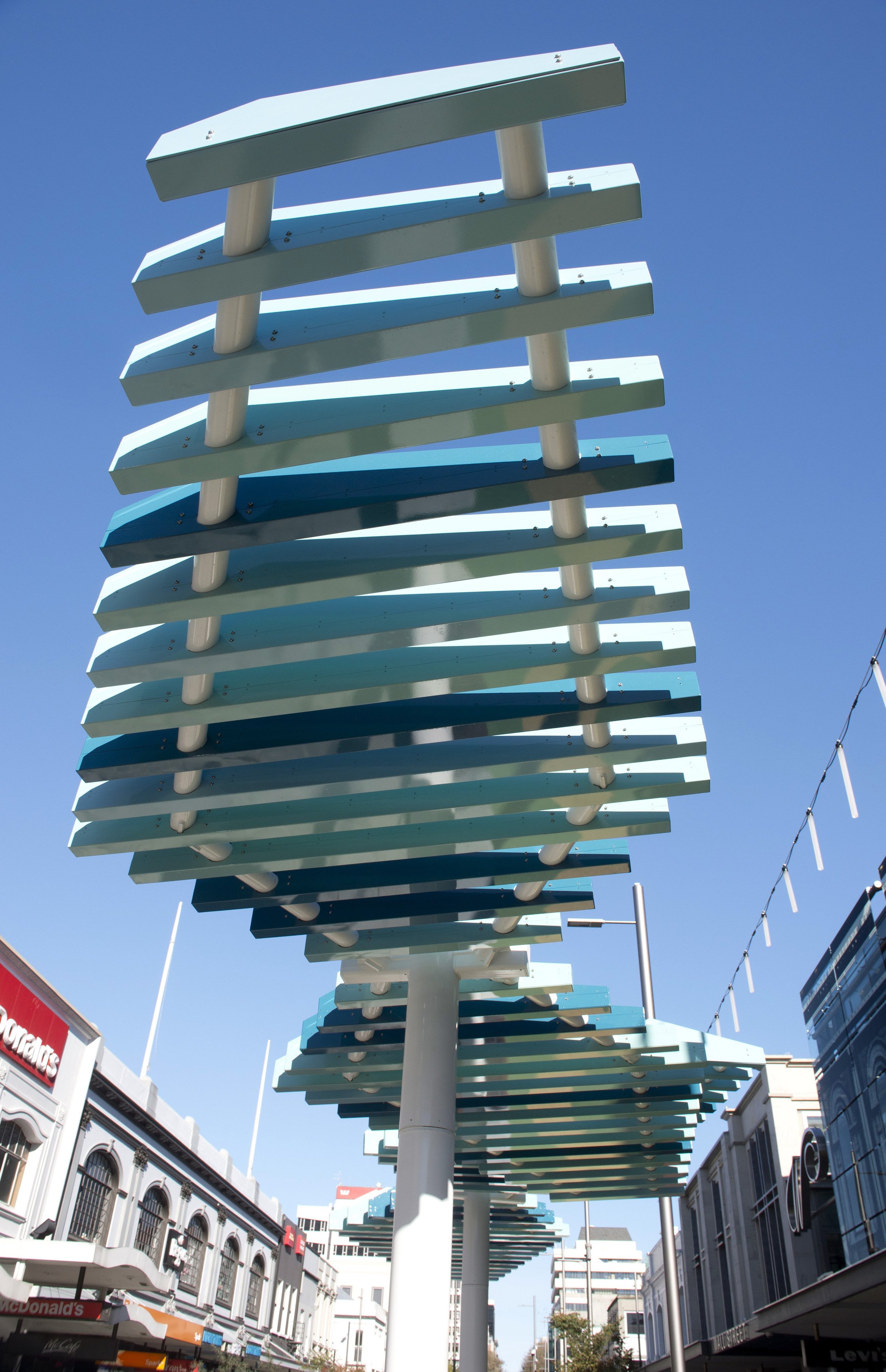
Paving stones shaped like Otago Harbour. Light poles that represent whaling stations. Sun shades imitating the wings of the kererū.
These design elements might not be immediately noticeable on a walk down the revamped George St.
But they are all part of a Kāi Tahu narrative woven into the street that tells a story of partnership between mana whenua and settlers.
Aukaha’s mana whenua advisory panellist Megan Pōtiki said incorporating Kāi Tahu history into the design elements of George St would allow the younger generation of Kāi Tahu to feel included in the landscape.
"My son has said for many years, ‘Where are my tupuna in this city? We don’t see ourselves in here, Mum’, and that is a fair comment.
"This is a way of us getting our footprint back to the area."
Former Aukaha chief executive Tahu Pōtiki initially led the project in partnership with the Dunedin City Council and the Ō3 Collective (Jasmax, Aecom and Isaac Construction), guided by a mana whenua panel.
Mrs Pōtiki created a narrative of George St, which Aukaha used as a basis for the designs.
"For many years, Tahu said to me, ‘Could you write that narrative?’
"And I’d always said to him, ‘I can’t do it, I don’t think I’ve got the ability to do that - I don’t have the history and the knowledge that you do.’
"And then when he passed away, it was like, ‘Well, crikey, who else is going to do it?"
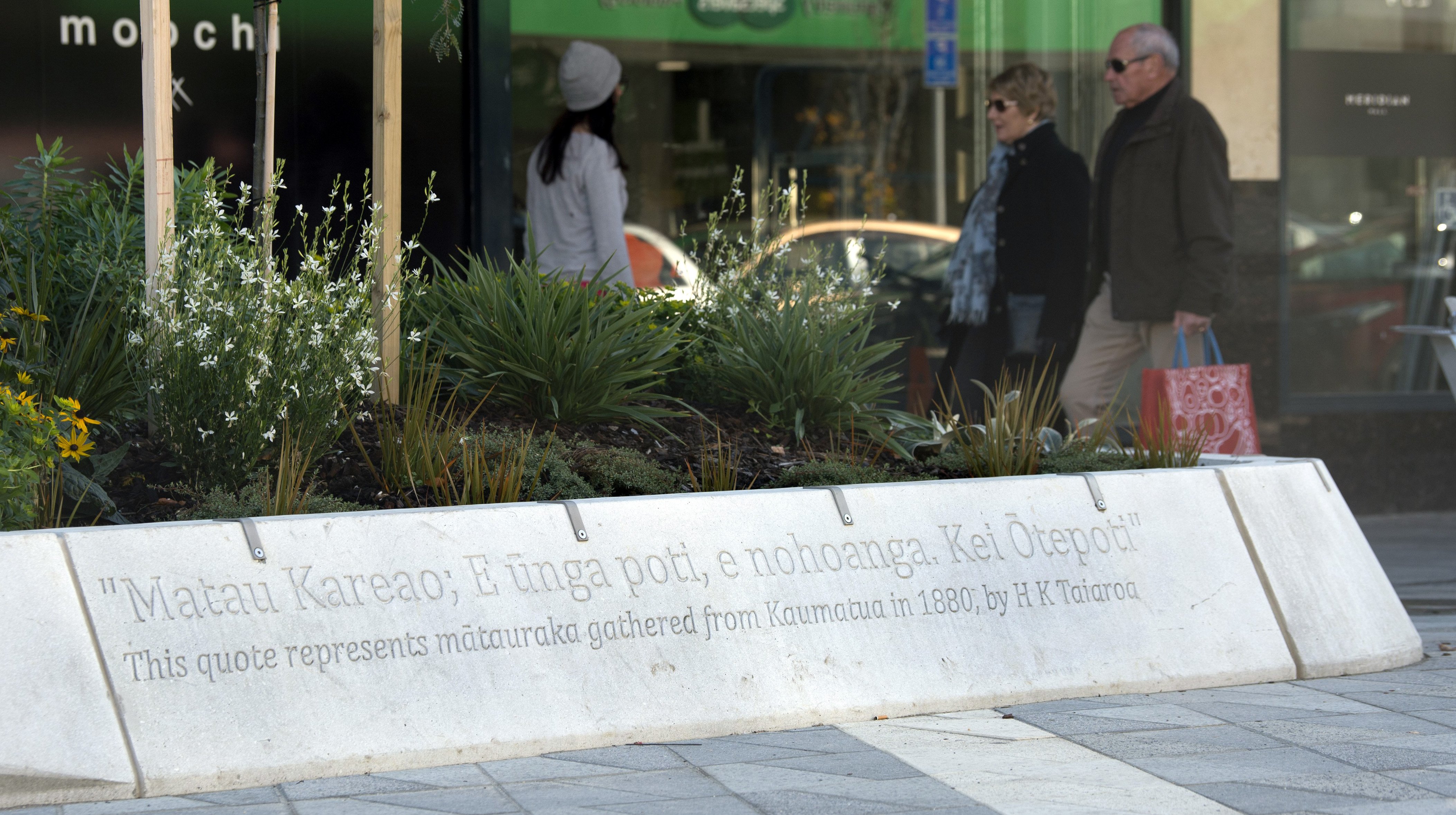
There were four key narratives incorporated into the design elements of George St - the name Ōtepoti, mātauraka (knowledge), mahika kai (food gathering and nurturing spots) and kaihaukai (traditional practice of trade).
One of the potential meanings of the name Ōtepoti referred to the corner of the four-cornered kete (woven bag) as the shape was similar to that of the Ōtākou harbour.
The pavers used on George St were developed specifically for Dunedin to imitate this shape.
Designers were also inspired by the patterns on Ōtākou marae’s stained-glass windows, which represent mahika kai.
These patterns - the pātiki (flounder) pattern and the aramoana pattern - were incorporated into the paving.
The pātiki is represented as the big diamonds and the aramoana pattern flows from the pātiki, representing ripples caused by the movement of water.
Gobo lights were used to further incorporate the pātiki, with projections of the fish inserted into spotlights along the street in the evening.
Etched into the ground outside the golden centre was a map based on the research of Mr Pōtiki.
"He’d be so proud," Mrs Pōtiki said. "I can feel it.
"We wouldn’t be in this place if it wasn’t for him."
The mana whenua map showed the original shoreline of Dunedin and names of important Kāi Tahu landmarks.
Four of the street’s light poles were named after the four main whaling stations of the region - Waikouaiti, Pūrākaunui, Moturata (Taiari Island) and Te Umukuri (Weller’s Rock).
Each pole was wrapped with a station name along with a cultural design, situated in order of their old locations from north to south.
"We brought that European technology piece into the street because Māori were very much involved in that space as well.
"It was a good connector - I’ve heard, not one Kāi Tahu alive today could say that they don’t descend from a whaler. We all descend from whalers."
The red shade of the Ōtākou Marae was included in the colour of the seesaws and the ground of the play area used colours which imitate a forest floor.
Colours were also used throughout the street to reflect the natural tones of key mahika kai species; makā (barracouta) and kererū.

Blue catenary lights hang in a zig-zag pattern down the street, mimicking the act of drying makā.
The lights are programmed to pulse every 15 minutes, representing the movement of the fish.
Designs of traditional fish hooks, known as matau karaeo, were laser cut into the ends of furniture.
"In the past, when Pākehā arrived, our people would take our fish to that area and we would try and sell it, exchanging for whatever goods that Pākehā would have with our fish and potatoes, etc."
Kererū were another important and abundant food source.
The large metal shades were designed in the shape and colour of the kererū.
Quotes and kupu (words) listing names of traditional species found in the local area were also etched into the pavement in the New Edinburgh Way Block.
Some quotes used in the design were from a collection of whakataukī accumulated by H. K. Taiaroa in 1880.
Quotes and excerpts of poems and prose from prominent Dunedin writers were included in a similar way.
One quote by Merekihereke Hape read: ‘‘Let the salt water and the fresh water be mixed together that it may be of one taste ... ,’’ which Mrs Pōtiki said was about the ‘‘mixing of two cultures’’.
‘‘I do think, on behalf of our people, particularly Ōtākou, we do recognise that there was the Scottish heritage and Māori heritage coming together. And, actually, I think Dunedin can be better at celebrating the mixture."
Aukaha’s design lead Simon Kaan worked with Kāi Tahu artists Fayne Robinson, Ephraim Russell and Turumeke Harrington on the street, as well as receiving architectural help from Jasmax.
Mr Kaan said that "if mana whenua can stand physically in that space and tell their stories and pick things out and talk about that whakapapa - that’s the real acid test".
He anticipated one day that school groups could use the street to learn about Dunedin history, but his favourite design aspect was the overall vibe the new layout created.
"People can go and enjoy George St and not feel excluded because they’re not there to spend money.
"Having healthy places like that for people to sit and chat, that whanaungatanga [relationship] - those aspects for me, design-wise, are the highlights."






